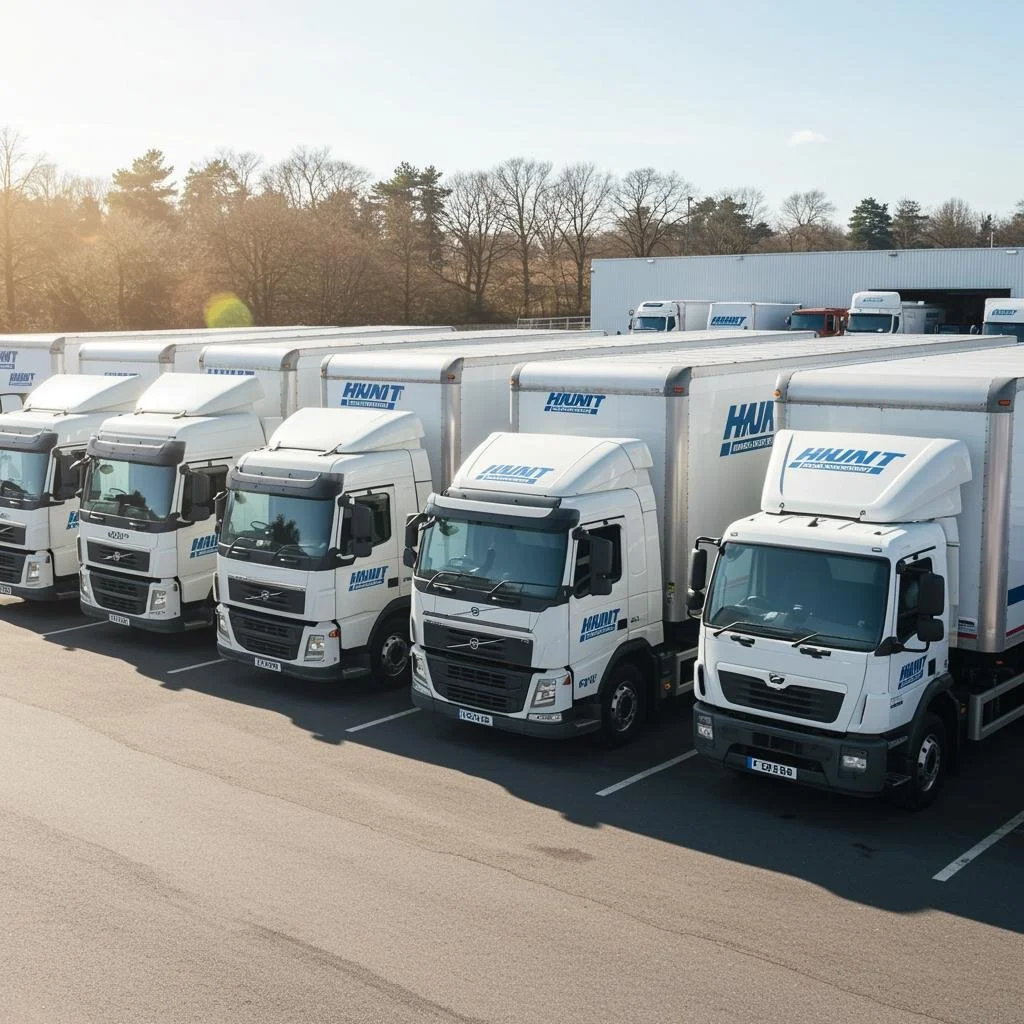Safety Guidelines In Construction: Protecting Workers On Elevated Job Sites
In the construction industry, worker safety is of paramount importance, especially on elevated job sites where the risks are inherently greater. In this article, we outline essential safety guidelines designed to protect construction workers who operate at heights, emphasizing the significance of proper training, equipment use, and safety protocols.
By implementing these measures, construction companies can significantly reduce the likelihood of accidents and injuries, fostering a culture of safety and accountability. Understanding these guidelines not only ensures compliance with regulations but also prioritizes the well-being of workers, ultimately leading to a more efficient and productive work environment.
No. 1
Understanding Fall Hazards in Construction
Falls pose serious and potentially life-threatening risks on construction sites if proper precautions are not taken. Understanding common dangers associated with working at heights and effectively assessing risks can significantly help keep workers safe and ensure a secure working environment.
Identifying Common Fall Risks
Construction workers face many fall hazards. Open edges on roofs, scaffolds, and floors can lead to dangerous falls without proper safety measures. Unprotected holes in walking areas also pose serious injury risks. Ladders can be dangerous, too, if not used properly, or if they are in bad shape.
Unstable work platforms pose another risk of falls, which can lead to serious injuries. Additionally, fragile surfaces like skylights may break under weight, creating urgent safety issues that need immediate attention.
Slippery surfaces caused by rain, ice, or spills further elevate the likelihood of falls occurring. Inadequate lighting can also make it incredibly challenging to spot potential hazards, increasing the danger for workers.
Tripping over tools, electrical cords, or debris left in walkways can also result in dangerous falls. Lastly, overreaching while working at heights is particularly unsafe and can contribute to accidents.
Importance of Risk Assessment
Checking for fall hazards is essential to keeping workers safe and preventing potential accidents. This involves carefully looking for open edges, hazardous holes, and unstable surfaces before beginning any work.
It is also crucial to test the strength and stability of all walking surfaces to ensure they can support the necessary weight. Additionally, make sure that ladders and scaffolds are set up correctly to provide a secure working environment.
Think carefully about the various weather conditions that could lead to the creation of slippery surfaces, particularly with rain, snow, or ice present. Make sure to check if adequate guardrails and fall protection systems are securely in place to ensure safety.
Take a moment to spot any potential tripping hazards in your work area that could cause an accident, like during junk removal after a renovation project. Additionally, consider whether any tasks will require you to work near edges or elevated areas, assessing the associated risks involved.
Regular site inspections play a crucial role in identifying and addressing new hazards that may arise within the work environment. It is essential to report any potential risks you observe to your supervisor as soon as possible.
According to OSHA regulations, fall protection is mandated for any work conducted at heights of 6 feet or higher in the construction industry. By consistently following established safety rules, workers can significantly enhance their protection from falls and ensure a safer workplace for everyone involved.
No. 2
Implementing Effective Fall Protection Systems
Fall protection systems are crucial for keeping workers safe when working at height. These systems use various equipment and methods to prevent falls or minimize injuries if a fall occurs.
Key Components of Fall Arrest Systems
Personal fall arrest systems are a key part of fall protection. They include harnesses, lanyards, and anchor points.
Harnesses wrap around your body to distribute the force of a fall. Make sure your harness fits snugly and is in good condition.
Lanyards connect your harness to an anchor point. They should be strong enough to hold your weight if you fall.
Anchor points are secure spots to attach your lanyard. They need to support at least 5,000 pounds per worker.
Check all parts of your fall arrest system before each use. Replace any damaged equipment right away.
Guardrails and Edge Protection
Guardrails create a barrier to prevent falls from edges. They're often used on scaffolds, roofs, and other high places.
Install guardrails that are at least 42 inches high. They should have a top rail, middle rail, and toe board.
The top rail needs to hold at least 200 pounds of force. The middle rail should be about halfway between the top rail and the working surface.
Toe boards keep tools and materials from falling off the edges. They should be at least 3.5 inches high.
Use guardrails around all open sides and edges where you could fall. This includes holes in floors and walls.
Safety Net Solutions
Safety nets catch workers if they fall. They're often used in areas where guardrails aren't practical.
Install safety nets as close as possible to the work area. They should never be more than 30 feet below the working surface.
The nets need to be strong enough to catch falling workers. Test them by dropping a 400-pound bag from the highest working level.
Check safety nets before each use. Look for tears, burns, or other damage. Remove any debris that falls into the net.
Extend safety nets at least 8 feet past the edge of the working area. This helps ensure workers land in the net if they fall.
No. 3
Equipment and Protective Gear
The right gear is essential to ensuring safety when working at heights. Workers must diligently select the best tools for their tasks and consistently maintain them in optimal condition. Let's take a closer look at what workers need to know to stay safe.
Harness Selection and Use
Workers, your harness is your lifeline when working at height. Pick one that fits you well and is comfy to wear. A full-body harness is often the best choice. It spreads the force of a fall across your body.
Make sure to check your harness before each use. Look for any wear, tears, or loose parts. Put it on snugly, but not too tight. The chest strap should be at armpit level. The leg straps should be snug but allow movement.
Always attach your harness to a strong anchor point. Use a lanyard or lifeline that's the right length for your work area. Don't forget to factor in the fall distance when setting up.
Choosing Appropriate Ladders and Scaffolds
Pick ladders and scaffolds that match your job needs. For ladders, think about height and weight limits. Extension ladders should stick up 3 feet past the roof edge. Step ladders need a locking spreader bar.
Scaffolds come in many types. Choose one that's stable for your work surface. Make sure it can hold the weight of workers, tools, and materials. Set it up on firm, level ground.
Always check ladders and scaffolds before use. Look for:
Sturdy rungs or steps
Secure locking mechanisms
No cracks or bends in the frame
Use guardrails on scaffolds when possible. They add an extra layer of safety.
Maintenance of Safety Equipment
Taking care of your gear keeps you safe. Set up a regular check schedule for all your equipment. Clean off dirt and grime after each use. Store gear in a dry place away from the sun and chemicals.
Replace any worn or damaged parts right away. Don't try to fix broken safety gear yourself. Get help from a pro or replace the item.
Keep a log of all checks and repairs. This helps you track the age and condition of your gear. Replace items that are past their useful life, even if they look okay.
Train your team on proper care of safety equipment. Everyone should know how to inspect and store gear correctly. This helps spot problems early and keeps everyone safer on the job.
Houzz
Make your home project a reality. Find inspiration, products and the pros to make it happen - all in one place.
No. 4
Regulatory Compliance and Standards
Safety rules are crucial when working at height in the construction industry. It is essential for workers to diligently follow both national and local regulations to remain safe and protected while on the job.
OSHA Regulations and Standards
OSHA sets important rules for working at height. Workers must use fall protection when working 6 feet or more above lower levels. This includes using guardrails, safety nets, or personal fall arrest systems.
OSHA also requires:
Proper training for all workers
Regular equipment inspections
Safe access to all work areas
Protection from falling objects
You should check OSHA's website for the most up-to-date rules. They update standards as new safety practices develop.
Adherence to Local Safety Regulations
Your local area may have extra rules and regulations in addition to OSHA's standards and guidelines. These additional requirements can differ significantly based on the specific state or city in which you operate.
Some common local rules include:
Special permits for high-rise work
Noise limits in residential areas
Specific safety gear requirements
Check with your local building department or safety office. They can tell you about any special rules in your area. Following both OSHA and local rules keeps you legal and safe on the job.
No. 5
Training and Safety Culture
Good training and a strong safety culture are key to preventing accidents when working at height. These help workers stay safe and know what to do in emergencies.
Developing a Robust Safety Training Program
Your comprehensive safety training program should thoroughly cover all critical aspects of working at height to ensure the well-being of all employees involved in such tasks. This includes understanding equipment safety, proper harness usage, and risk assessment procedures.
Make sure to include:
Proper use of fall protection gear
How to inspect and maintain equipment
Identifying hazards on the job site
Safe ladder and scaffold use
Correct techniques for climbing and moving at height
Use hands-on practice and regular refresher courses. This helps workers remember important safety skills. Tailor your training to specific job roles and tasks on your site.
Keep records of all training sessions. This shows you're meeting legal requirements and helps track worker progress.
Promoting a Culture of Safety on Site
Build a culture where safety is everyone's top priority. Encourage workers to speak up about unsafe conditions. Reward those who follow safety rules and report hazards.
Lead by example. Managers should always use proper safety gear and follow procedures. This shows workers that safety matters at all levels.
Use safety meetings and toolbox talks to keep height safety fresh in workers' minds. Put up safety posters and reminders around the site.
Create a system for reporting near-misses and close calls. Learning from these can prevent future accidents.
Emergency Preparedness and Response
It's essential that workers plan for emergencies before they happen, as being prepared can make a significant difference in how they respond to unforeseen situations.
Make sure workers have:
A clear rescue plan for falls
First aid kits and trained first-aiders on-site
Emergency contact numbers posted in visible spots
Regular practice drills for different scenarios
Train workers on what to do if someone falls. This includes how to use rescue equipment and when to call for help.
Keep rescue gear like harnesses and ropes ready and easily accessible. Check this equipment often to make sure it's in good shape.
Work with local emergency services. They can help you improve your plans and may offer extra training.
Takeaways
Safety guidelines in construction play an essential role in protecting workers on elevated job sites. The implementation of comprehensive safety protocols—such as the use of personal protective equipment (PPE), fall prevention systems, and regular safety training—ensures that workers are equipped to identify and mitigate risks associated with working at heights.
A culture of safety, reinforced by vigilant supervision and open communication among team members, fosters an environment where potential hazards are proactively addressed. Ultimately, prioritizing safety not only safeguards the well-being of workers but also enhances overall productivity and project success, highlighting the critical need for ongoing commitment to safety practices in the construction industry.
Looking for Business Resources?
Are you seeking ways to elevate your business to new heights? Dive into the array of resources provided by our esteemed business partners designed to empower your ventures.































